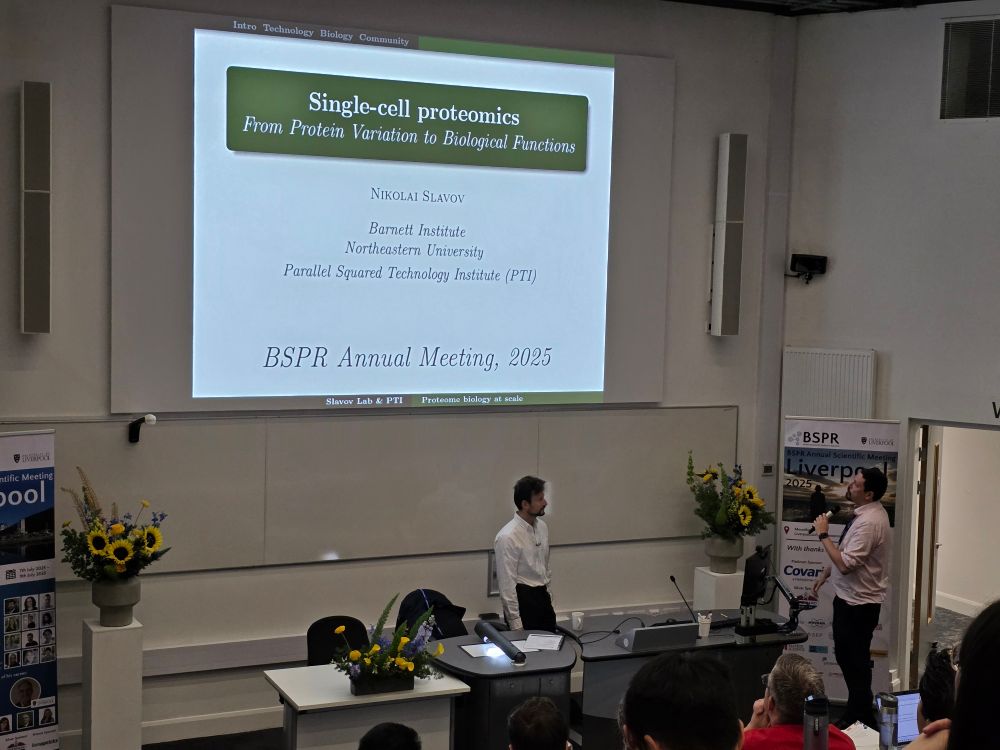Slavov Laboratory
@slavovlab.bsky.social
560 followers
25 following
56 posts
We seek principles in the coordination among protein synthesis, metabolism, cell growth and differentiation. PI: @slavov-n.bsky.social
Web: https://slavovlab.net
Videos: http://youtube.slavovlab.net
Posts
Media
Videos
Starter Packs
Reposted by Slavov Laboratory
Reposted by Slavov Laboratory
Reposted by Slavov Laboratory
Reposted by Slavov Laboratory
Reposted by Slavov Laboratory
Slavov Laboratory
@slavovlab.bsky.social
· Aug 11

Large-Scale, Quantitative Protein Assays on a High-Throughput DNA Sequencing Chip
By generating a massive peptide and protein array in situ on an Illumina sequencing
flow cell with in vitro translation, Layton et al. demonstrate direct protein assays
for enzyme function and antibod...
www.cell.com
Reposted by Slavov Laboratory
Reposted by Slavov Laboratory
Slavov Laboratory
@slavovlab.bsky.social
· Jun 21

Single-cell proteomics: quantifying post-transcriptional regulation during development with mass-spectrometry
Summary: This Spotlight highlights how mass spectrometry analysis of single cells can enable protein quantification and help the identification of their roles in developmental mechanisms.
journals.biologists.com





















